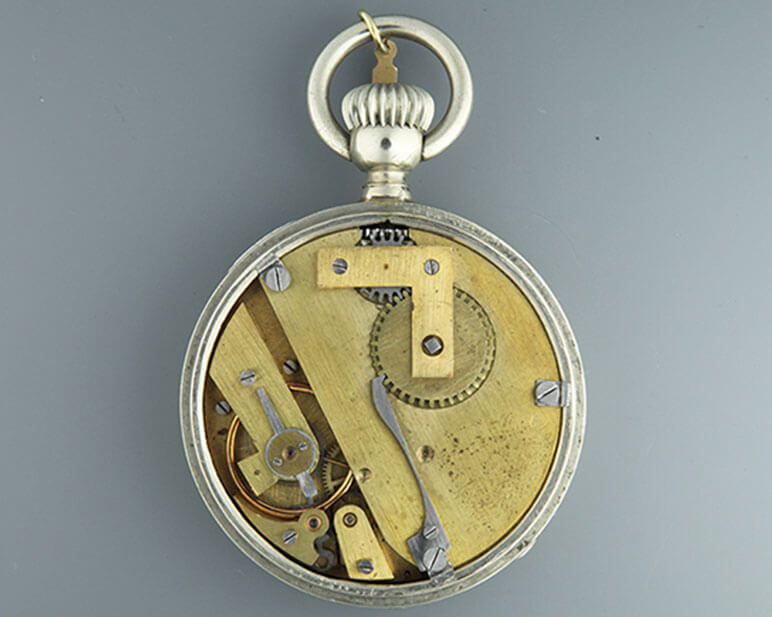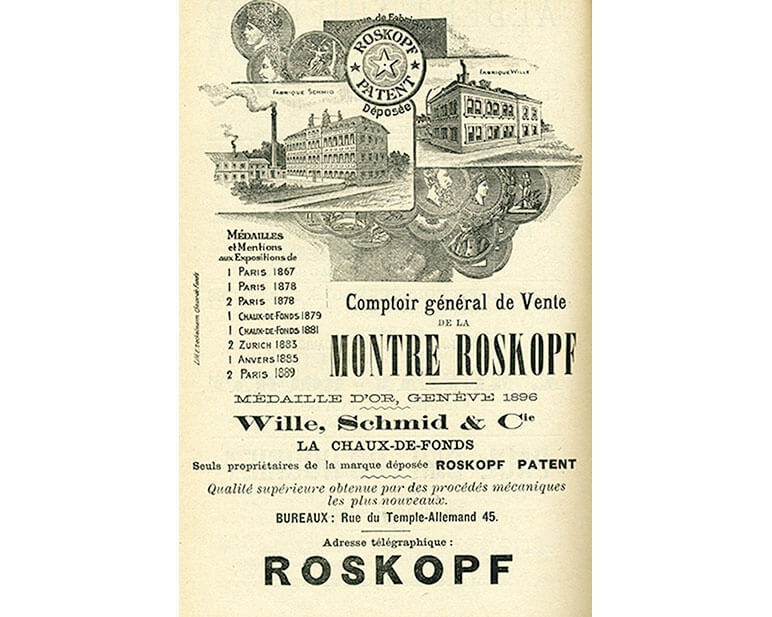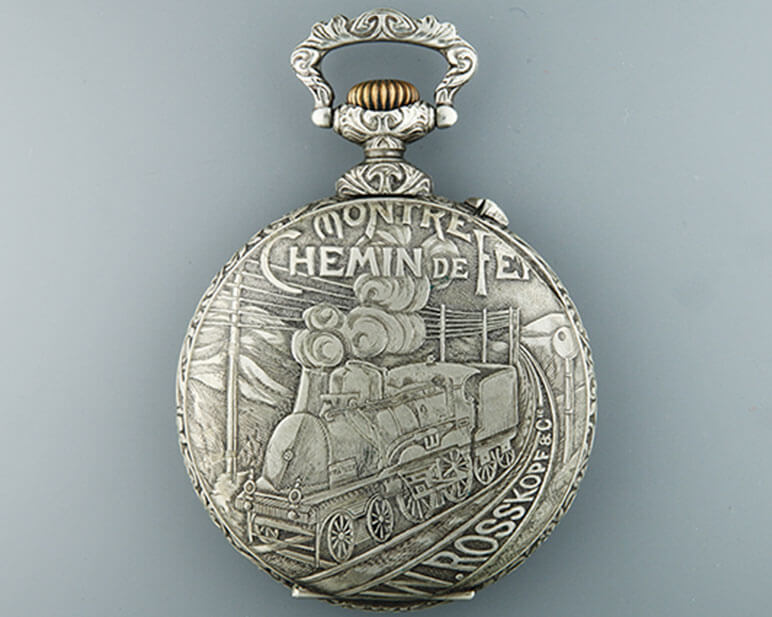Based on an idea by Jean-Michel Piguet, assistant curator of the International Museum of Watchmaking (MIH), this exhibition retraces the history of Georges-Frédéric Roskopf who in La Chaux-de-Fonds created a watch that he named «la Prolétaire» and which today is often referred to as «the Roskopf watch», after the patronymic of its designer. At first sight, this inexpensive, simple and robust-looking watch has no exceptional features. What is its importance and what trace does it leave in the history of watchmaking? Let’s venture two centuries into the past…
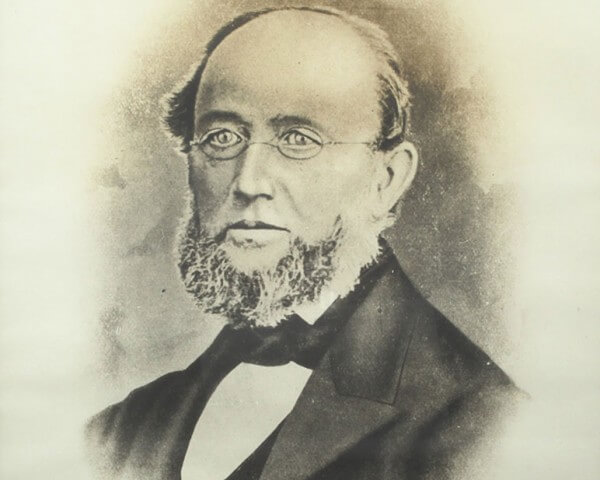
Georg-Friedrich Roskopf was born in 1813 in Niederweiler, in the Grand-Duchy of Baden in Germany. At the age of sixteen, to learn French, he moved to La Chaux-de-Fonds where he embarked on a commercial apprenticeship. He followed this by learning the watchmaker’s art. In 1835, Roskopf married a wealthy widow. A son, Fritz-Edouard, was born the same year. Roskopf then set up business as a watchmaker producing gold watches. At that time, La Chaux-de-Fonds was an important watchmaking centre where watch production was divided into two categories: technical and decorative. The establishment of Neuchâtel Obervatory in 1858, followed by the School of Watchmaking in 1865, stimulated technical progress. The accuracy and functionality of watches improved and they became increasingly complicated. At the same time, La Chaux-de-Fonds was the main centre for the Swiss production of gold watchcases. Artisans, trained firstly in the workshops of master watchmakers and, from 1870, at the School of Art, adorned them with lavish decorations, transforming them into true masterpieces. These luxury watches, representative of production in La Chaux-de-Fonds in the second half of the 19th century, attracted a wealthy international clientele.
In 1867, having worked in the town for ten years or more, Roskopf launched a watch he nicknamed «La Prolétaire». A simplified model, it indicated only the hour and minutes. The use of non-precious metals and the decision not to decorate it brought down production costs. Placed on the market priced at twenty francs, it was ten, if not thirty times less expensive than a prestige timepiece sold at the same period. Despite its advantageous price and its good quality, it remained beyond the reach of most workers. It nonetheless won a bronze medal at the Paris World Exposition of 1867.
The first «Prolétaire» were manufactured by Georges-Frédéric Roskopf according to the system of établissage, or piece-work. The comptoir was the main workshop, generally situated in the watch manufacturer’s residence, and it was here that finishing work and final assembly were carried out before the finished products were offered for sale. During preliminary stages watch movements were carried to and fro, from the blank maker to family workshops located either in the town of La Chaux-de-Fonds or in the surrounding countryside. Consisting of 57 parts, the movement of the «Prolétaire» was characterised principally by the removal of one wheel from the gear-train, by the use of a pin-pallet escapement, and by the absence of a motion-work, with the time being set directly on the minute hand. The number of «Prolétaire» watches manufactured between 1867 and 1873 is estimated at between 60,000 and 70,000 models.
In 1874, following the death of his wife, Roskopf transferred his business to two companies based in La Chaux-de-Fonds, Wille Frères and Charles-Léon Schmid, which continued to produce the «Prolétaire» watch under the name Roskopf Patent. A contract specified the responsibilities of each company, which undertook to produce the same watches, sell them at the same price and use the same trademark. One financial clause was inserted: the acquirers of this brand would pay to the citizen Roskopf an indemnity of 0.50 franc per watch in respect of all Roskopf watches produced over a period of four years, thereby acknowledging the sacrifices made by the founder in giving this brand its market value.
In the 1880s both companies grew considerably, marked by the construction in 1891 of two factories: Wille Frères, situated on the Rue du Temple Allemand, and Charles-Léon Schmid, on the Rue Alexis-Marie Piaget. The latter was to become one of the leading manufactories in La Chaux-de-Fonds, employing around 320 people in 1910. Production of the Roskopf Patent watch was therefore concentrated in a single location.
In parallel with the deployment of production capacity, the two firms pooled their efforts in a commercial sense by setting up a joint enterprise. Industrial production of the Roskopf allowed production costs to be reduced, thereby encouraging a wider public to purchase the watch. It is estimated that fifty million Roskopf Patent watches were produced by the two firms between 1874 and 1947.
Due to a lack of records concerning the life of Georges-Frédéric Roskopf, we cannot say why he transferred his business to these two companies rather than to his son. However Fritz-Edouard Roskopf, a trader in Geneva, did begin the production of eponymous watches around ten years after the death of his father. He registered various trademarks and patents while collaborating with firms such as La Société d’horlogerie de Rosières, A. Schild SA, blank maker in Granges, and Cortébert Watch Co. Louis Roskopf, the grandson of Georges-Frédéric, also established a watchmaking company to produce Roskopf watches. He teamed up from the outset with a manufactory, La Société horlogère de Reconvilier.
Despite the relative success of the Prolétaire in Switzerland – and in La Chaux-de-Fonds in particular – sales of the watches boomed on international markets. The different medals obtained at international exhibitions were no doubt a contributing factor, as well as patents taken out in Belgium, France and especially the United States. This inexpensive watch was also diversified through motifs stamped on its case, with subjects commemorating famous personalities, events, or simply historical highlights.
The exhibition «La drôle de montre de Monsieur Roskopf» is open to the public until 19 January 2014 at the MIH.
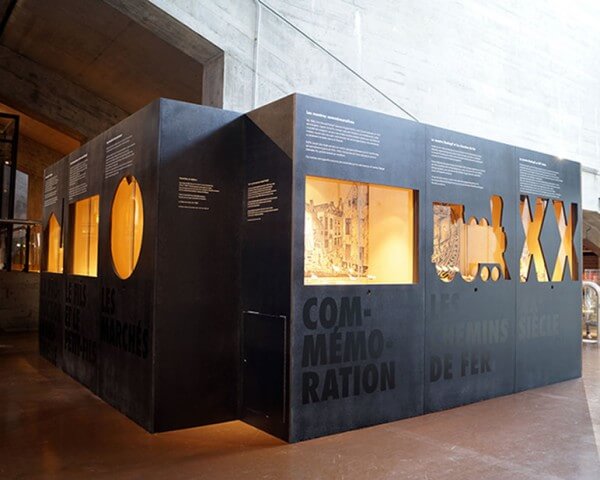
Article published in Revue FH








